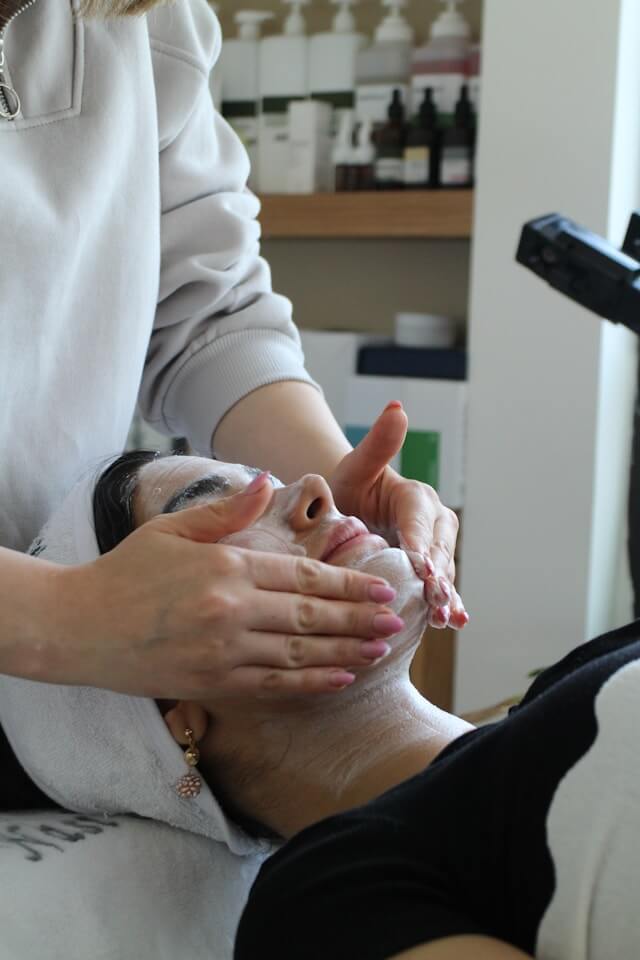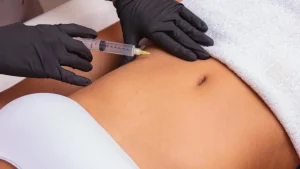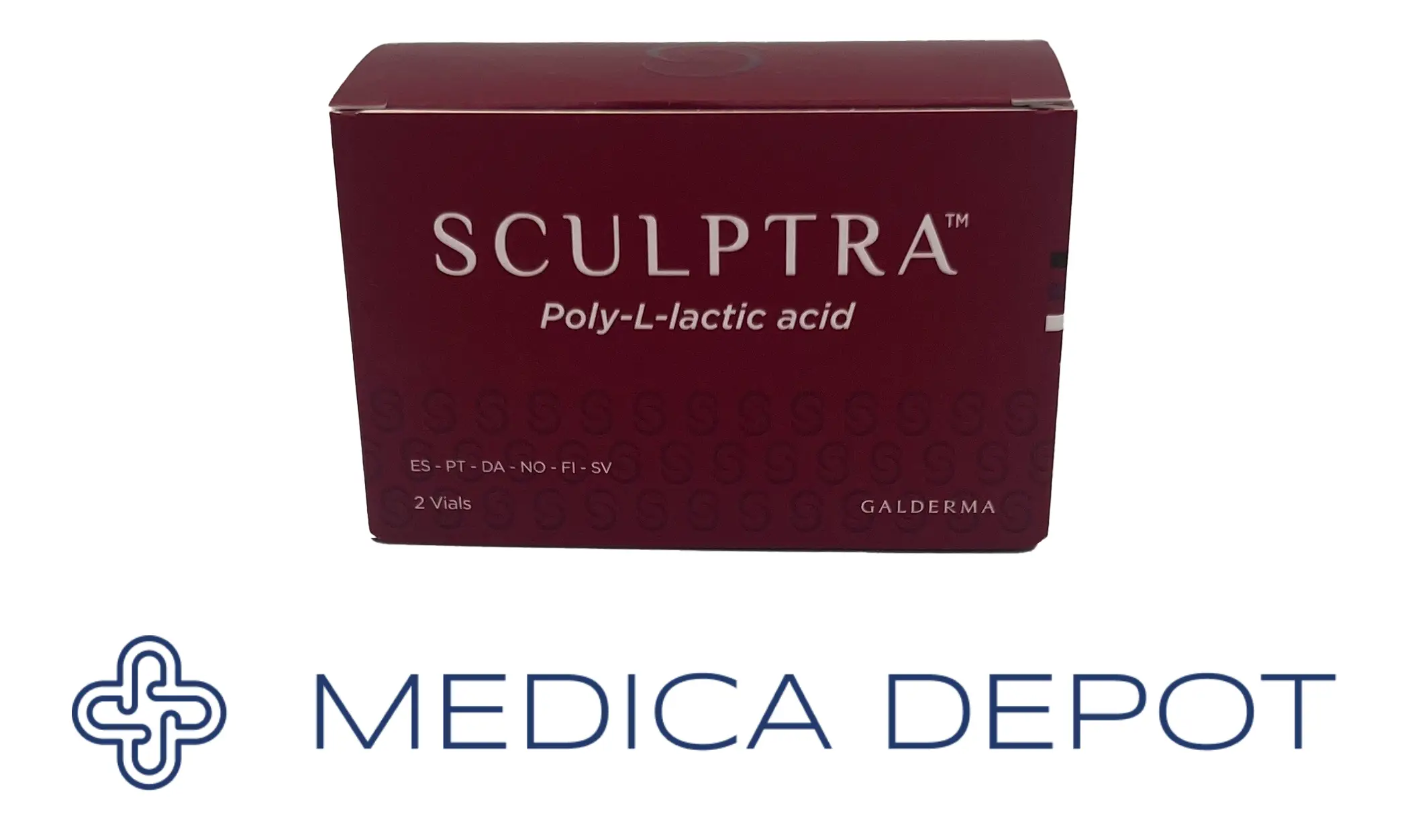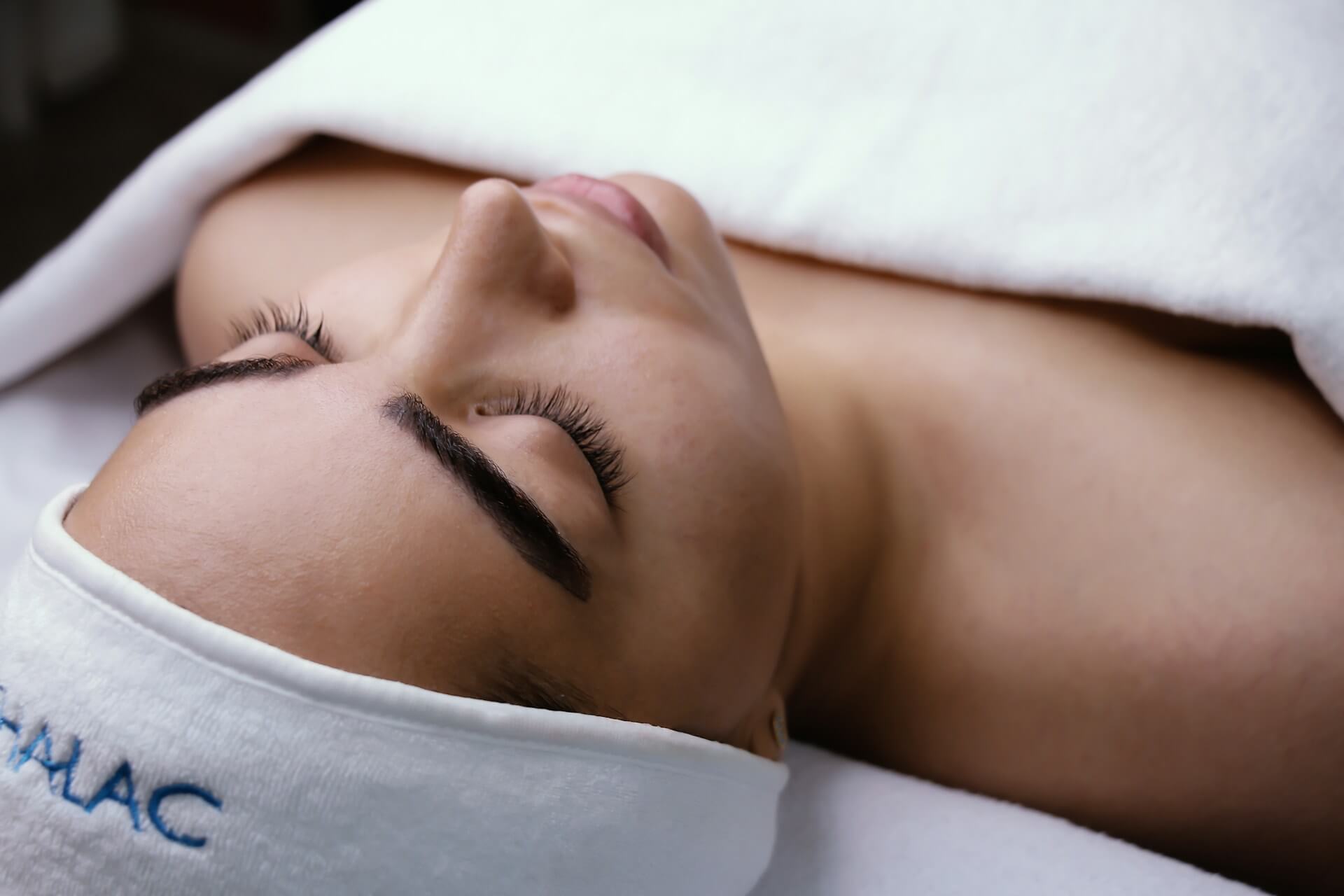What Is Regenerative Aesthetics?
In recent years, regenerative aesthetics has emerged as one of the most talked-about frontiers in skin health and anti-aging. But what does the term actually mean?
Put simply, regenerative aesthetics refers to treatments that support the skin’s natural ability to repair, renew, and regenerate itself over time. These approaches don’t just mask the signs of aging—they aim to address its underlying causes, helping skin function better from within.
The science behind these treatments is grounded in how skin cells communicate, respond to damage, and produce key structural components like collagen and elastin. By working with the skin’s own biology, regenerative aesthetics seeks to restore a more youthful, resilient complexion in a way that’s both targeted and long-lasting.
Much of the attention in this field is focused on two powerful ingredients: exosomes and stem-cell-derived factors. Both are shaping the future of clinical and at-home skincare, and both fall under the umbrella of regenerative treatments.
From microneedling serums to growth factor-infused moisturizers, regenerative skincare products are increasingly being used to:
- Reduce inflammation
- Accelerate post-procedure healing
- Improve skin firmness, texture, and hydration
- Minimize signs of aging such as fine lines and pigmentation
Understanding the mechanisms behind these treatments—and the science that supports them—is key to making informed decisions about their use.
Stay with us as we break down what exosomes and stem cells are, how they’re used in aesthetic medicine, and what professionals and patients alike need to know in this fast-evolving category.
What Are Exosomes—and Why Are They in Skincare?
Exosomes have quickly become one of the most talked-about innovations in regenerative skincare, but confusion still surrounds what they are and how they work.
In simple terms, exosomes are microscopic messengers—tiny vesicles naturally released by cells to deliver important signals. Think of them as couriers that transport proteins, growth factors, and genetic material between cells to help regulate inflammation, repair tissue, and stimulate regeneration.
In skin health, this ability is incredibly valuable. When applied topically or delivered through microneedling or other procedures, exosomes derived from stem cells can support faster healing, improved skin texture, and a reduction in visible signs of aging.
For a more in-depth explanation, see Medica Depot’s overview of exosomes in aesthetics.
How Are Exosomes Used in Aesthetics?
In clinical practice, exosomes are often used in conjunction with treatments such as:
- Microneedling
- Fractional lasers
- RF microneedling
- Chemical peels
They are typically applied immediately post-procedure to accelerate healing, reduce redness, and enhance overall results. In-office formulations usually contain exosomes derived from lab-cultured mesenchymal stem cells, carefully processed for safety and efficacy.
Some topical serums and masks also include exosome-rich formulations for at-home use, though the concentration and clinical impact can vary.
Are Exosomes Safe?
Exosome-based skincare is considered safe when sourced and formulated responsibly. Most reputable exosome products used in aesthetic medicine are cell-free, meaning they do not contain live stem cells—just the beneficial signaling molecules those cells produce.
That said, the field is still in its early stages, and regulatory frameworks are evolving. Not all exosome products on the market are created equal, so patients and providers should choose formulations backed by clinical studies, transparent sourcing, and strong safety data.
What Do the Results Look Like?
Preliminary research and practitioner experience suggest that exosome treatments may help:
- Reduce downtime after procedures
- Improve skin tone and firmness
- Decrease inflammation and redness
- Support collagen production and skin rejuvenation
These outcomes make exosomes a promising tool for patients looking for more natural, biologically intelligent ways to support healthy skin aging.

What About Stem Cells in Aesthetic Medicine?
Stem cells are another powerful player in the future of skincare—but they’re also a source of misunderstanding. Unlike exosomes, which are cell-free, stem cells are living biological units capable of dividing and transforming into specialized cell types. Their regenerative potential has made them a focus of research in everything from orthopedics to aesthetics.
How Are Stem Cells Used in Skincare?
In aesthetic medicine, stem cells are primarily valued for their ability to support tissue repair, modulate inflammation, and encourage collagen production. There are two main types of stem cell-based treatments used in skin procedures:
Autologous stem cells – harvested from the patient’s own fat (usually via liposuction), then processed and re-injected into the skin.
Stem cell-derived extracts – used in topical serums or post-treatment protocols. These contain growth factors and cytokines secreted by cultured stem cells, but not the live cells themselves.
It’s important to clarify that most “stem cell skincare” does not actually contain live stem cells. Instead, it uses the bioactive substances those cells produce—offering regenerative benefits without the ethical or regulatory concerns of live-cell therapies.
Are Stem Cells the Same as Exosomes?
Not quite. While related, they are not interchangeable.
- Stem cells are the original biological source—the living cells that produce signals.
- Exosomes are part of what stem cells secrete—tiny packages that deliver those regenerative signals to other cells.
Many of today’s most advanced regenerative treatments combine both: using stem cell-derived exosomes for targeted delivery of healing factors, often without the need for injecting live cells.
Are Stem Cell Treatments Safe?
When used properly in a clinical setting, stem cell-based treatments are generally considered safe. Autologous treatments (using a patient’s own cells) carry minimal risk of rejection, while topical and non-cell-based products eliminate many of the complications associated with live tissue therapies.
However, the market is still evolving. Not all stem cell skincare products are backed by clinical evidence, and international regulations vary widely. Patients should look for products and procedures backed by published studies and administered by qualified professionals.
Exosomes vs. Stem Cells: What’s the Difference?
As regenerative skincare becomes more mainstream, it’s easy to confuse two of its most talked-about ingredients: exosomes and stem cells. While they’re closely related, they are not the same—and understanding the distinction is essential for anyone exploring these treatments.
Both are connected to the body’s natural repair systems, but they serve different roles. Stem cells are the source—cells with the ability to become other types of cells—while exosomes are the messengers they release. Most regenerative skincare products use stem cell–derived ingredients (not live cells) and purified exosomes that help signal repair, reduce inflammation, and improve skin quality.To explore the differences in more depth, this guide breaks down exosomes vs. stem cells in skincare, including how each is sourced, used, and regulated.
Why the Distinction Matters
Many regenerative skincare products use stem-cell-derived exosomes—making it essential to understand that exosomes are the messengers, while stem cells are the source. Both support the skin’s ability to heal, but they do so through different mechanisms.
For patients, this means asking the right questions:
- Is this product using live stem cells or derived ingredients?
- Are the exosomes well-sourced and clinically validated?
For professionals, it’s about choosing technologies that are evidence-based, well-regulated, and suited to the procedure at hand.

How Regenerative Treatments Are Used in Clinics
Regenerative skincare isn’t just a buzzword—it’s a growing part of aesthetic practice, particularly when combined with treatments that stimulate the skin’s natural renewal processes. From microneedling to radiofrequency (RF) and lasers, clinicians are increasingly turning to exosomes, peptides, and growth factors to enhance results and speed recovery.
One example is Plinest, a polynucleotide-based treatment used in regenerative protocols to promote hydration, elasticity, and repair. Learn more about how Plinest is used in aesthetic medicine and how it fits into the broader trend of biostimulatory treatments.
Here’s how these treatments work in real clinical settings:
The Regenerative Treatment Journey
Step 1: Skin Preparation
Before treatment, the skin is cleansed and often prepped with a gentle peel or topical solution to improve absorption.
Step 2: In-Clinic Procedure
Microneedling, RF microneedling, fractional laser, or other controlled-injury treatments are performed to stimulate collagen production and open microchannels in the skin.
Step 3: Application of Regenerative Serums
Immediately after treatment, a regenerative serum—often containing exosomes, stem-cell-derived growth factors, or peptides—is applied. These ingredients work by accelerating repair, reducing inflammation, and improving visible results.
Step 4: Healing and Results
Over the next 5–10 days, patients typically experience faster healing, less downtime, and improvements in skin tone, texture, and firmness. Clinical photos often show more visible improvement when regenerative boosters are used post-procedure.
Why It Matters
These post-treatment serums aren’t just cosmetic—they actively engage the skin’s natural recovery process. By combining in-clinic procedures with bioactive ingredients, professionals can offer a more complete and effective skin rejuvenation experience.
Many clinics report that microneedling with exosomes, in particular, delivers enhanced results in fewer sessions, especially for concerns like fine lines, acne scarring, and overall skin quality.
What Professionals Look For
When choosing a regenerative booster, experienced providers consider:
- Purity and sourcing of exosomes or growth factors
- Clinical-grade formulations with transparent ingredient lists
- Post-treatment compatibility to ensure optimal skin response
- Regulatory compliance and CE/FDA registration status

What to Look for in Regenerative Skincare Products
As regenerative aesthetics gain traction, so too has the market for skincare products claiming to deliver stem cell–like or exosome-based benefits. But not all products are created equal. If you’re a practitioner or editor navigating this space, understanding what’s actually inside these formulas is key.
Here’s how to read the label with a clinical lens.
Key Ingredients in Regenerative Skincare
Look for clinically supported bioactive ingredients that contribute to skin repair, firmness, and renewal:
Exosome filtrate
Derived from mesenchymal stem cells, exosome filtrate contains signaling molecules that may help trigger skin regeneration. Typically used post-treatment to calm and repair.
Growth factors and peptides
These biomimetic ingredients help signal cellular turnover and collagen synthesis, supporting smoother, firmer skin.
Hydrating and barrier-repair agents
Ingredients like hyaluronic acid, ceramides, and niacinamide often support recovery by reinforcing the skin barrier.
Importantly, most over-the-counter “stem cell” skincare does not contain live stem cells. Instead, these products use stem cell–conditioned media or cell-derived proteins, typically sourced from controlled lab environments.
Clinical-Grade vs. Cosmetic-Grade Products
There’s a clear distinction between regenerative skincare developed for in-clinic use and products designed for home care. Clinical-grade products tend to feature higher concentrations of active ingredients and are often derived from human stem cell lines or medical-grade peptides. These formulas are typically used by professionals after procedures like microneedling or laser treatments to enhance repair.
By contrast, cosmetic-grade products available to consumers are usually less potent, more stable, and may use synthetic or plant-based analogs to mimic the effects of exosomes or growth factors. These are best suited to daily maintenance and barrier support.
How to Evaluate a Product
Whether you’re a provider or an editor reviewing regenerative skincare, consider the following:
Source transparency – Is the exosome or growth factor ingredient clearly identified as human-derived, plant-derived, or synthetic?
Label accuracy – Does the product list specific bioactive ingredients, or rely on vague marketing language?
Clinical backing – Has the formula been used in practice protocols or cited in case studies?
Storage and handling – Some regenerative actives require cold-chain handling or special packaging to remain effective.
Products backed by clinical use and transparent sourcing tend to deliver the most consistent results, especially when used in combination with in-office treatments.
What Aesthetic Doctors Say About Regenerative Aesthetics
While the buzz around exosomes and stem cell–based skincare continues to grow, most aesthetic professionals approach these treatments with measured optimism. Regenerative aesthetics is a fast-evolving field, but practitioners emphasize that real results depend on clinical context, product quality, and patient education.
Here’s what some experienced providers are saying:
“Exosomes are promising, especially post-procedure. They’re not magic — but when sourced and used correctly, they support real repair.”
— Dr. Simone Hartley, MD, Aesthetic Medicine Specialist
“Most stem cell skincare doesn’t contain stem cells — and that’s not a bad thing. We’re looking at derived growth factors and peptides, which still have regenerative potential when used properly.”
— Dr. Jason Wu, Cosmetic Dermatologist
“I use exosome serums after microneedling and laser. The skin heals faster, and patients notice a difference — especially in redness, texture, and recovery time.”
— Dr. Aysha Malik, Aesthetic Physician
“It’s essential to set expectations. These products aren’t replacements for injectables or surgery, but they’re a strong complement to skin rejuvenation plans.”
— Dr. Elena Moretti, Facial Aesthetics Consultant
Across specialties, doctors agree on one thing: not all regenerative skincare is created equal. High-quality sourcing, appropriate pairing with treatments, and clear patient communication are critical to success.
Clinicians also stress the importance of regulation and education — urging patients to avoid unverified claims and instead focus on medically backed protocols.

What’s Regulated—and What to Ask Before You Treat
As regenerative skincare becomes more mainstream, it’s important to understand what’s actually regulated — and what’s still operating in a grey area.
In most cases, regenerative skincare products like exosome or stem-cell-derived serums fall into two categories:
Cosmetic-grade products: These are designed for topical use, such as creams or serums sold over the counter or used in facials. In the U.S., these are regulated by the FDA as cosmetics — meaning they cannot claim to treat or alter the structure of the skin. In Europe, similar rules apply under the Cosmetic Regulation, although some ingredients may also require additional safety assessments.
Clinical-grade products: These are typically used in a medical setting alongside procedures like microneedling or laser resurfacing. Some may be cleared for professional use under CE mark regulations in Europe or registered with the FDA as part of a medical device or biologics pathway — but this varies significantly by product and region.
Here’s what you should ask before you treat:
Is the product cosmetic-grade or medical-grade?
This affects both the regulation and how the product can be used.
Is it FDA-registered or CE marked?
This won’t always apply, but if the product claims to have clinical effects, it should meet relevant safety standards.
Where are the exosomes or growth factors sourced from?
Look for transparency about origin — are they plant-derived, lab-derived, or from human stem cells?
What does the provider use it with — and why?
Ask how the product fits into your overall treatment plan and what the expected outcomes are.
Are results supported by evidence — or just marketing?
Seek providers who can speak to the science, not just the hype.
Ultimately, both professionals and consumers should be cautious of exaggerated claims. Regenerative skincare is an exciting space — but real results come from evidence-based products, regulated protocols, and experienced clinicians.
5 Key Takeaways About Regenerative Aesthetics
Regenerative skincare is one of the most talked-about trends of 2025 — but it’s also one of the most misunderstood. Here’s what to know before you buy, try, or recommend it:
1. Exosomes act as messengers, not magic fixes.
These microscopic vesicles help cells communicate and trigger repair. In skincare, they’re used to support healing and improve results after treatments like microneedling or laser — but they work best as part of a wider clinical plan, not a standalone cure.
2. “Stem cell skincare” doesn’t mean live cells.
Most products use ingredients derived from stem cells, such as growth factors or peptides. These can help with hydration, firmness, and skin regeneration — but they’re not the same as live cell therapy or clinical injections.
3. Results depend on how and where it’s used.
The same ingredient can deliver very different results depending on the setting. In-clinic use — especially when combined with procedures — typically leads to stronger outcomes than over-the-counter versions used at home.
4. Not all regenerative products are created equal.
Some are regulated as cosmetic products, others as medical treatments. Check for FDA registration, CE marking, or clear ingredient sourcing. Transparency is key when evaluating quality and safety.
5. This is a fast-moving, science-led category.
The field is evolving quickly, with new studies emerging on how regenerative ingredients interact with skin. Be wary of overblown claims, and look for formulas grounded in real research and responsible clinical use.
Sources
- PubMed – A Review of Exosomes and Their Application in Cutaneous Medical Aesthetics
- JCAD Online – Exosomes: A Comprehensive Review for the Practicing Dermatologist
- Aesthetic Plastic Surgery – Exosomes in the Real World of Medical Aesthetics: A Review
- Journal of Drugs in Dermatology – Exosomes in Cosmetic Dermatology: Review of Benefits and Challenges
- MDPI Cosmetics – Use of Exosomes for Cosmetic Applications
- Frontiers in Medicine – Regenerative Topical Skincare: Stem Cells and Exosomes
- Mayo Clinic – Tapping into the Potential of Platelet‑Derived Exosomes in Aesthetics









